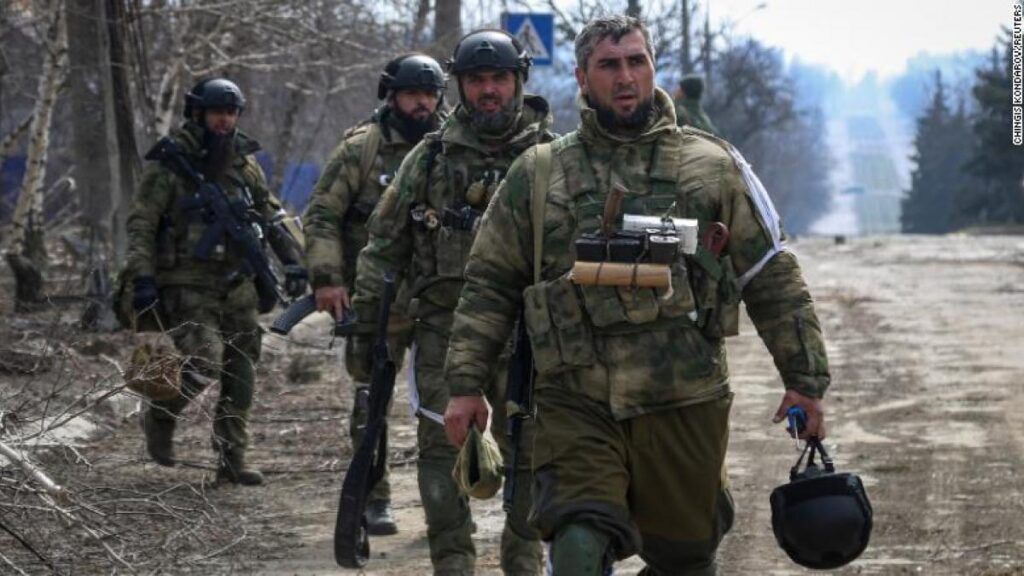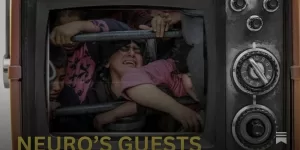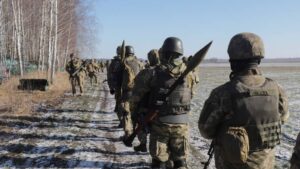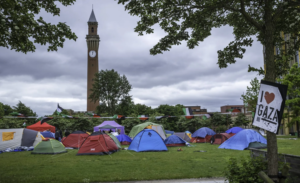The Russian General Staff gave an in-depth briefing on March 30 on the military strategy behind the special operation in Ukraine culminating in the decision to decrease the military activities in the Kiev and northern Chernihiv regions.
Broadly, the MOD messaging is that the twin objectives have been realised — namely, pinning down Ukrainian forces and military assets to the Kiev region and, secondly, preventing the transfer of Ukrainian forces from the western and central regions to the east by “using the absolute air dominance” and also by deploying modern high-precision weapons.
The MOD spokesman said: “All major lines of communication, supply and reserve approach are taken under full control. Ukraine’s air defence systems, airfield infrastructure, major military depots, training and mercenary concentration centres have been destroyed… Thus, all the main tasks of the Russian Armed Forces in Kiev and Chernigov directions have been completed.”
Clearly, the western analysts and media largely lost the plot from Day 1 by branding the Russian special operation a “failure.” They erred basically in prejudging it to be a “Russian invasion”, whereas, Moscow was very precise in giving the rubric of “special operation” to its offensive.
An invasion demands quantifiable, visible results, whereas special operation has a dynamic of its own where the outcome becomes an amalgam of the Donbass region’s restoration to its original boundaries, the security and welfare of the Russian population, the systematic elimination of the neo-Nazi forces who were on rampage in that part of Ukraine through the past 8-year period with the support of the state and encouragement from the western intelligence and complicity of the authorities in Kiev — and all the while, not taking the eye off the the wearing down of Ukraine’s military assets and fighting capabilities as a whole.
What emerges today is that there is a better understanding of the “special operation” — and it goes all the way to the NATO chief Jens Stoltenberg and the US President Joe Biden. The Russian operation’s focus (as of now at least) is almost entirely on the eastern Donbass region where in Luhansk, over 93% of the territory has been “liberated”, while in Donetsk close to 60% of the territory is under control of Russian forces and the residual resistance in Mariupol port city is expected to be mopped up within the week.
The above characterisation is of course with reference to the liberation of entire territories that originally belonged in the pre-2014 period to the Donbass republics (which had shrunk by two-thirds through the past 8-year period of security operations ordered from Kiev.)
A variety of factors made this operation an uphill task — principally, a high concentration of Ukrainian forces in Donbass with neo-Nazi elements embedded in all military units, blockaded settlements, use of “human shields” of ethnic Russians, etc.
Above all, the Ukrainian forces themselves were in a state of combat readiness with some of their best units deployed in the region already when the Russian operation began on February 24, with their own secret plan drawn up for launching offensive actions by strike groups in the Donbass region by the end of the month.
To be sure, the Ukrainian forces continue amassing forces in the area. The Russian military is also continuing its precise strikes on military targets, which are intended to prevent reinforcements reaching the Ukrainian forces as a major battle looms ahead in Donbass where tens of thousands of Ukrainian forces are facing encirclement.
Thus, during April 2, the Russian operational-tactical aviation hit 28 military assets of the Ukrainian Armed Forces, including 2 depots of missile and artillery weapons and ammunition, as well as 23 areas of concentration of Ukrainian weapons and military equipment.
Notably, the Mirgorod military airfield in central Poltava Region, a strategically important hub, has been taken out of action and several Ukrainian combat helicopters and aircraft found in its camouflaged car parks, as well as fuel and aviation weapons depots have been destroyed.
Equally, Maj. Gen. Igor Konashenkov, spokesman for the Russian Ministry of Defense, announced yesterday that in a high-precision strike with the Iskander operational-tactical missiles on the defence headquarters in the city of Kharkiv on Thursday, “more than 100 nationalists and mercenaries from Western countries” were confirmed as killed.
In general, the Russian operation is currently concentrating on regrouping and resupplying their units in Donbass. The next stage of the Russian advance in the eastern region is linked to the full liberation of Mariupol. The liquidation of the residual resistance in Mariupol is crucial as it will free significant forces for redeployment in the upcoming offensive in Donbass.
The resistance has shrunk to three main centres in Mariupol: the central district, the Azovstal plant and the port area. The neo-Nazi forces are largely confined to the Azovstal plant, which is one of Europe’s biggest iron and steel plants, with military headquarters, warehouses and barracks. Repeated attempts to evacuate the Neo-Nazi commanders by helicopter have been thwarted — Russian forces shot down two helicopters yesterday.
Chechen forces deployed near the Azovstal are preparing for an assault. The head of Chechnya Republic, Ramzan Kadyrov has given an ultimatum to the remnants of the Azov regiment: “I suggest that they soberly assess their remaining resources and give up. You can give up today. If this does not happen, tomorrow, April 2, all the militants will be destroyed.”
Overall, the receding frontline near Kyiv and Chernihiv signals the regrouping of Russian forces. The Russian side was not planning to storm Kyiv city itself in the near future. This redeployment of forces may be seen as the run-up to the upcoming intensification of offensive operations in the east.
On Wednesday, Maj. Gen. Igor Konashenkov said the Russian forces were regrouping in order to “intensify operations in priority areas and, above all, to finish the operation for the complete liberation of Donbas.” To be sure, the upcoming phase of special operation holds profound implications for the eventual conclusion of a peace agreement.
(M.K. Bhadrakumar is a former Indian diplomat. Courtesy: Indian Punchline, Bhadrakumar’s blog.)




